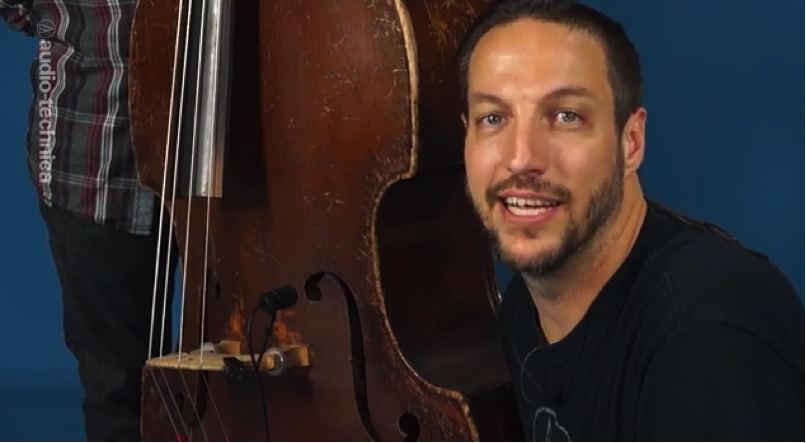Upright bass has a complex, dynamic sound. Its broad range of frequencies and timbres make it very tricky to capture accurately, particularly if isolation is an issue. But when you get it right, it provides richness and elegance to your track. Below you’ll find all the information you need to bring your upright bass into focus.
1. Ribbon Mic
Start with AT4080 ribbon microphone positioned about even with the bottom of the F-hole, angled just slightly toward the bridge. From here, you’ll capture both the detail from the fingers and the full low-end from the F-hole without letting the sound become too boomy.
 2. Small Cardioid Condenser Mic
The upright bass can be relatively quiet compared to the other instruments. This can make isolation difficult, especially in a live situation. To combat this, try clipping an ATM350 cardioid condenser microphone directly to the bridge of the instrument. The mic should be attached to the side of the bridge and aimed at the top of the F-hole just a couple of inches away.
2. Small Cardioid Condenser Mic
The upright bass can be relatively quiet compared to the other instruments. This can make isolation difficult, especially in a live situation. To combat this, try clipping an ATM350 cardioid condenser microphone directly to the bridge of the instrument. The mic should be attached to the side of the bridge and aimed at the top of the F-hole just a couple of inches away.
 With these two mic setups, you should have no problem isolating the upright bass sound in your mix. Every upright bass is different. Type of wood, age and musician can affect the timbral quality of the bass. Only trial and error with your particular situation can lead you to the perfect sound, but with these configurations and the right A-T mics, you’re well on your way. Check out the full video below:
With these two mic setups, you should have no problem isolating the upright bass sound in your mix. Every upright bass is different. Type of wood, age and musician can affect the timbral quality of the bass. Only trial and error with your particular situation can lead you to the perfect sound, but with these configurations and the right A-T mics, you’re well on your way. Check out the full video below:
Published
3rd June 2014